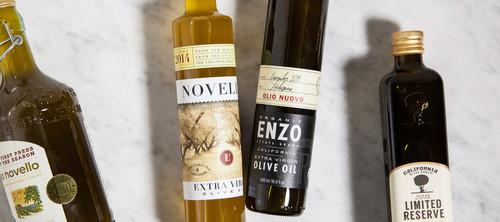The Only 3 Cooking Oils You Need
You
could stock your kitchen with bottles of sesame, safflower, peanut, and
sunflower oil. But the truth is you really only need three to cover
your bases.

AN OLIVE OIL FOR COOKING "Using olive oil is a great way to add subtle flavor to whatever you are cooking," Rhoda says. California Olive Ranch Everyday Extra Virgin is a great extra virgin olive oil that won’t break the bank, so you can use it for sautéing vegetables, roasting meat, and baking cakes.
A VEGETABLE OIL FOR FRYING Every kitchen needs an oil with high smoke point. (The smoke point is the point at which an oil, when heated, starts to smoke and break down. This not only imparts a bad taste, it’s thought to be unhealthy to consume. Extra virgin olive oil has a smoke point of roughly 325-375°F, which is a bit too low for high-temperature cooking—you need something that has a smoke point closer the temperature you fry at, which is about 400°F.) A basic canola oil like Wesson or Crisco is a solid, inexpensive option. But if you’re willing to splurge, Rhoda recommends trying grapeseed oil (she likes Spectrum Naturals brand), which has a slightly higher smoke point and a cleaner flavor than canola. “It really outshines other oils because not only is it able to withstand high heat while maintaining a neutral taste, the oil’s clean, light flavor also makes it ideal for cold applications like salad dressings, marinades, and dipping sauces. This flexibility helps to justify the higher price point.”
AN OLIVE OIL FOR DRIZZLING
Yup,
back to olive oil. When reaching for an olive oil to dress salads, dunk
good bread in, and drizzle over soup, go for one that packs more
serious punch. “The cool thing about olive oils is that their
characteristics vary from region to region (like wine), so they all
taste a little different. Some are grassy, some are buttery, and some
have spicy notes, and they all have a pleasantly lush mouth-feel.” The
higher quality the olive oil, the more these characteristics come
through. “Splurge a little more here: you won’t need to use much of it
to impart richness, but the flavor will really shine through,” says
Rhoda. California Olive Ranch Limited Reserve is a great choice, as is
Lucini Premium Select Extra Virgin


No comments:
Post a Comment